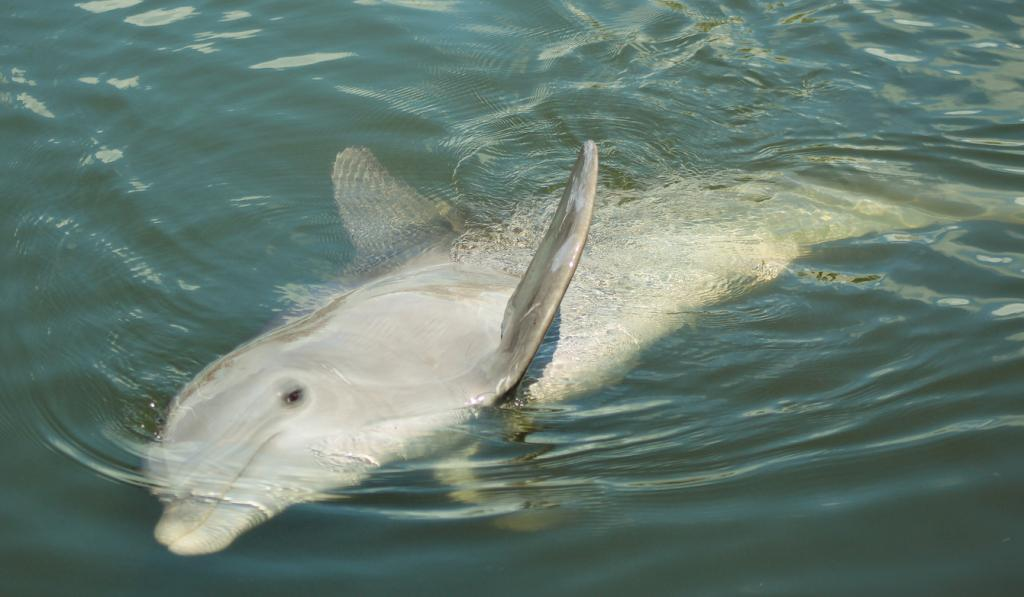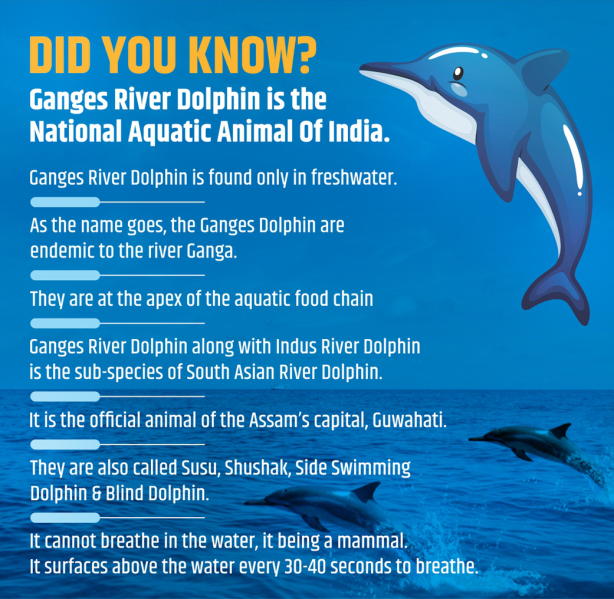Free Courses Sale ends Soon, Get It Now


Free Courses Sale ends Soon, Get It Now



Copyright infringement not intended
Picture Courtesy: https://www.downtoearth.org.in/news/wildlife-biodiversity/india-s-first-national-dolphin-research-centre-finally-a-reality-94790
Context: India's first National Dolphin Research Centre (NDRC) has been established in Patna, Bihar, marking a significant milestone in the conservation efforts for the endangered Gangetic river dolphin.
Details
Gangetic River Dolphin
|
Freshwater dolphin species in the world |
|||
|
Species |
Habitat |
Conservation Status |
Interesting Fact |
|
Amazon River Dolphin (Inia geoffrensis) |
Amazon River basin and tributaries in South America |
Data Deficient |
Known for their pink colouration, especially in males. |
|
Ganges River Dolphin (Platanista gangetica) |
Ganges and Brahmaputra rivers in India, Nepal, and Bangladesh |
Endangered |
Nearly blind and relies on echolocation for navigation and hunting. |
|
Indus River Dolphin (Platanista minor) |
Indus River in Pakistan |
Endangered |
One of the most endangered dolphin species due to habitat loss and pollution. |
|
Irrawaddy Dolphin (Orcaella brevirostris) |
Mekong, Ayeyarwaddy, and Mahakam rivers in Southeast Asia |
Critically Endangered |
Known for their friendly and playful behaviour. |
Geographical Range and Regional Names
Appearance and Behavior
Vocalization and Echolocation
Reproduction and Diet
Threats and Conservation

Conclusion
|
PRACTICE QUESTION Q. How do Ganges River Dolphins navigate murky waters? A) Excellent eyesight B) Echolocation using sound waves C) Following other dolphins D) Using the Earth's magnetic field Answer: B Explanation: Despite being partially blind, Ganges River Dolphins are excellent hunters thanks to echolocation. They emit high-frequency sounds that bounce off objects, creating a mental map of their surroundings. |
© 2024 iasgyan. All right reserved